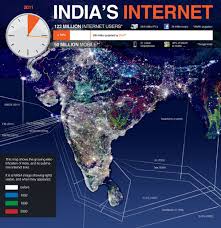
Private equity and venture capital (PE/VC) investments have recorded the highest monthly investments in the past 10 years at $3.1 billion in May 2017. For the third consecutive month in a year, the investment flow crossed the $2-billion mark.

Private equity and venture capital (PE/VC) investments have recorded the highest monthly investments in the past 10 years at $3.1 billion in May 2017. For the third consecutive month in a year, the investment flow crossed the $2-billion mark.

India’s internet economy is slated to double to $250 billion and the number of 4G-enabled devices is envisaged to jump six times to 550 million by calender 2020, says a joint study by the Boston Consulting Group (BCG) and The Indus Entrepreneurs (TiE).
Total number of mobile internet users, the study says, is likely to nearly double to 650 million by 2020, and per user data consumption levels are estimated to grow 10-to-14 times to as much as 7-to-10 GBs a month from a current level of 700 MB per month per user.
The BCG-TiE study expects the growth of the country’s internet economy to be propelled by e-commerce and financial services, with the share of digital transactions likely to more than double to nearly 30-40% by 2020.
But the study cautions that the number of high-speed internet users in India continues to remain “limited to only 56%” of the total number of mobile internet users. This is since a sizeable chunk of such users continue to use feature phones, and are accordingly, constrained by device capability and internet speed.
As a result, “average data consumption per user (in India) continues to be low at less than 1 GB data/month, vis-à-vis developing economies like Indonesia and Brazil (at 2-to-3 GB/month) and developed economies like Japan and US (at 9-to-11 GB/month)”.
According to the BCG-TiE study, a combination of low fixed-line broadband coverage, a high proportion of feature phones among mobile handsets in use and high data prices have been key contributing factors behind low internet consumption in the county so far.
Nevertheless, the study expects high-speed mobile internet adoption levels to surge in the country from current the 56% to 85% of total the mobile internet base by 2020 as Indians are increasingly doing more than just calling on their handsets. “One in every four, accesses internet on their mobile phones, summing to 391 million internet users, which for perspective is bigger the population of US,” said BCG and TiE in their joint study.
Furthermore, the country’s devices ecosystem, it said, is leapfrogging by 2-3 years, and the emergence of 4G enabled feature phones is expected to give a fillip to high-speed internet access, going forward.
So much so, the study suggests that 3G smartphones are likely to get phased out by 2018, and be entirely replaced by 4G smartphones inundating the market.